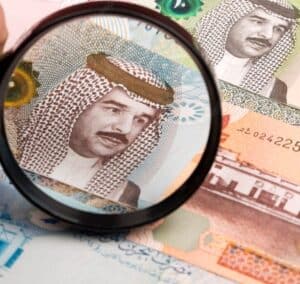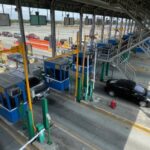The Arabian Gulf’s Ahrain is a semi-tropical archipelago with a land area of 710 km2, measuring around 45 km long by 15 km broad. It may be seen from Saudi Arabia’s eastern coast. The population of the nation’s capital, Manama, has more than doubled in the last thirty years.
The Al Khalifa family is in charge of the nation, which is a constitutional hereditary monarchy. A little more than 70% of people are of Bahraini ancestry. Arabic is the official language, but English, which is also the language of business, is spoken by the majority of the people.
Thanks to its developed market and consistent rule of law. Additionally, it serves as a strong entry point for the larger MENA region as well as neighboring Gulf Cooperation Council (GCC) markets.
Since 1965, when the Bahraini dinar (BHD) took the role of the Gulf rupee, it has served as Bahrain’s official unit of account. Next to Saudi Arabia in the Persian Gulf is the affluent island nation of Bahrain, whose main sources of income are the oil and gas sectors. After the Kuwaiti dinar, the Bahraini dinar has the second-highest value in the world (KWD).
The BHD is 2.659 times correlated to the US dollar.
History
- In 1965, the Gulf Rupee was replaced by the Bahrain Dinar.
- The dinar was linked to the IMF’s SDRs starting in 1980. The fixed exchange rate is 0.376 dinars to one dollar.
- New paper notes were introduced in 1979.
- The Bahrain Agency changed its name to the Central Bank of Bahrain in 2006.
- The Central Bank of Bahrain introduced a new series of notes in 2008 that represented Bahrain’s recent and historical progress.
- Bahrain accepts Saudi Riyals as well, with the exception of the 500 riyal note.
Knowledge of the Bahraini Dinar (BHD)
The BHD (Bahraini dinar), which is made up of 1,000 fils, is frequently traded under the sign BD. Officially tied to the U.S. dollar at a rate of 1 BD = 2.659 USD, it is a highly valued currency.
The Roman denarius, which served as the initial common silver coin during Roman times from 211 BC for approximately five hundred years, is where the name dinar originates.
Bahrain once used the Persian Gulf rupee as its official currency. The Persian Gulf rupee was replaced by Bahraini dinars, which went into circulation in 1965 at a rate of one dinar to ten rupees.
The Bahrain Currency Board published banknotes up to 1973. The Bahrain Monetary Agency assumed charge over this duty after 1973.
The dinar started pegged to the Special Drawing Rights (SDR) of the IMF in 1980, with a fixed exchange rate of 0.376 dinars to one US dollar.
Although there has been some volatility, primarily because of the unrest in the area, the peg has been kept. The Bahrain Agency changed its name to the official Central Bank of Bahrain in 2006. (CBB). Both conventional and Islamic banks are regulated by the CBB. In addition, it is in charge of regulating brokers, insurance companies, and other financial organizations.
The denominations of the Bahraini dinar banknotes are 0.5, 1, 5, 10, and 20 dinars. Coins with values of 5, 10, 25, 50, 100, and 500 fils are also available throughout the nation. The currency is controlled by Bahrain’s Central Bank.
The Central Bank started circulating notes with improved security measures in 2016. To help the blind, the new notes also have higher lines.
Coins and Notes
One dinar in Bahrain is divisible into 1000 fils. and is typically expressed using three decimal places (For example BD 2.103). On October 16, 1965, 1, 5, 10, 25, 50, and 100 fils coins were introduced; however, the 1 fils denomination was removed from circulation after just one year. A 500 fils coin was introduced in 2000.
The new 25 fils coin features a seal from the Dilmo Civilization, the 50 fils coin features a dhow (boat), and the 100 fils coin features the national coat of arms instead of the original 1, 5, 10, 25, 50, and 100 fils coins’ depictions of palm trees.
The 500 fils piece was taken out of circulation in 2011 because it included an image of the Pearl Roundabout, a gathering place for anti-government protests, in one of the most extreme examples of the symbolic significance of imagery on the currency. The roundabout was also completely demolished.
Bahrain issued its first banknotes in 1965 in the amounts of 1, 4, 1, 2, 1, 5, and 10 dinars. A 100 fils note was later introduced. The nation issued notes in the amounts of 1, 2, 5, 10, and 20 dinars in 1979, with Arabic, backdates to 1973. The nation’s most recent set of notes, intended to highlight the nation’s accomplishments and history, was released in 2008.
The Old Bahrain Court and Bahrain International Circuit are seen on the brown one-half dinar note. The Al Hedya Al Khalifiya School and the Sail and Pearl monument can be seen on the obverse and reverse of the red 1 dinar coin, respectively.
The five dinar currency is blue, with the first oil well in Bahrain and Aluminum Bahrain on the obverse and Shaikh Isa House in Muharraq and Riffa Fort on the reverse. The 10 dinar note features Sheikh Hamad ibn Isa Al Khalifah (Bahrain’s King) on the front and the Shaikh Isa Bin Salman Al Khalifa Causeway on the back.
The 20 dinar note also includes a picture of Sheikh Hamad ibn Isa Al Khalifah, with the Al Fateh Islamic Center printed on the back.
The Economy of Bahrain
Bahrain was improving its economic stability during the 1980s and 1990s as a result of developmental improvements that had been made. It was technically the Bahrain Central Bank’s fourth official series of notes when it introduced a new set of banknotes in 2008.
This new publication celebrated Bahrain’s promising future while also paying homage to its rich past.
Bahrain will require financial assistance in 2021 due to the epidemic in 2020, and its GDP is expected to increase by 3.3% in that year with predictions that it will stay the same over the medium term.
Please Read: Economic: Money Supply
Additional Facts
- According to rankings, Bahrain has the tenth-freest economy in the world.
- Aluminum smelting, oil refining and processing, Islamic and offshore banking, tourism, iron pelletization, ship maintenance, and fertilizers are the top industries.
- Aluminum, textiles, and petroleum are all exportable goods.
- 60 percent of products exported are petroleum-related.
- Crude oil, machinery, and chemicals are examples of imports.
- Estimated unemployment is 3.8% plus or minus, however, due to the depletion of oil reserves, it is rising quickly.
- In Bahrain, agriculture hardly exists and contributes 0.3% of the country’s GDP.
- Bahrain and the United States of America have a free trade agreement.
- The nation has a 15-year plan in place and is working on expanding its product offerings. Bahrain’s economy is currently thought to be the one in the Arab world that is expanding the fastest.
Conclusion
The second-most valuable currency in the world is the dinar, and Bahrain’s economy is expanding and becoming more diverse. The future appears promising for this tiny nation in the Persian Gulf if things continue on their current path.
Need to buy or change your Bahraini Dinar? Visit the AllCash branch nearest you. AllCash offers great rates. Feel safe and secure with AllCash Money Exchange.





